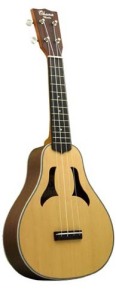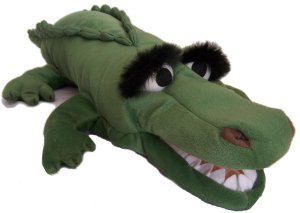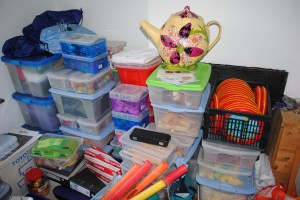
I do, I really do. It’s a fab little instrument and so easy to play. The ukulele had fallen out of fashion when I was young and so I had a 3/4 sized guitar as a child – I think I could only ever play How Much is That Doggy in the Window? and songs in G major that used 3 chords. I bought myself a guitar about 5 years ago with the idea of rediscovering the joys of strumming but for some reason I bought a steel stringed guitar which made my finger-tips bleed which is ‘Not a Good Look’ when you’re playing in front of toddlers.
I had a rethink and bought a ukulele instead. No harsh steel strings, so easy to play (you can play a C chord with one finger) and it’s small and easily transportable too which is always a bonus when transporting a carload of props and other paraphernalia about.
I re-affirmed my love affair with the uke today when I found out I’d settled into holiday mode a little too early, setting off to do my final nursery session of the term but leaving my iPod at home.
So what to do… without the iPod I had to discard my jungle themed ideas for the session. Our listening activity was to be comparing animal sounds – now I’m no match for a real chimpanzee so wasn’t going to attempt that – and I also had to think of something else for the movement activities I’d had planned as I couldn’t use the wonderful pieces of music from the Carnival of the Animals I’d selected. Time to panic with a nursery group of lively children to keep occupied!
Fortunately this term I’m doing several songs using my ukulele so it is always with me. I did this term’s topic song Clap and Clap and Clap and Stop! and then asked the children for other song suggestions, especially if it had anything to do with animals. They came up with When Cows Get Up in the Morning which is one of my favourites and they chose a wide range of animals from lions to donkeys! It’s a good song for developing vocal awareness between singing and using the voice for other sounds such as roaring.

I’d also put my selection of recorders (bass, tenor, treble and descant) in the car because we’ve been looking at pitch and I wanted to show the children how size affects pitch and tone. I played the various sizes and then asked the children to choose two instruments to use to play a tune for an elephant and a bird. I was pleased they chose the bass recorder for the elephant and the descant for the bird as it demonstrated the differences in pitch and timbre very well.
I usually have a box of randomly selected percussion instruments in the car and decided that the children could help me sort them into groups, depending on their sound and method of playing. We then went back to our song Clap and Clap and Clap and Stop! and changed the words to Play and Play and Play and Stop! It’s a little more challenging to get the children to stop playing an instrument as opposed to stop clapping, but by the time we’d played it quietly and loudly too, the children were listening very well.
And then, of course, there’s the unaccompanied voice – we did The Stretchy Man using the lycra sheet which the children just adore, so we sang it slowly, quickly, quietly and loudly and had a great time.
There you have it, a completely acoustic session by mistake, but one which worked really well. I may well ‘forget’ my iPod again in future but will make sure I always have my uke!



